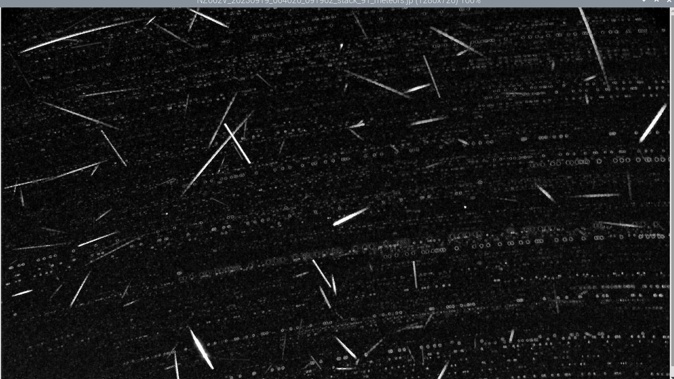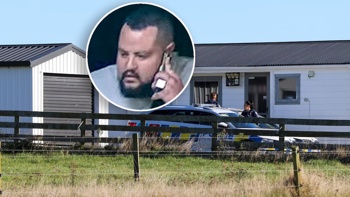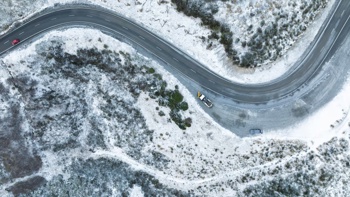
A surprise sighting of a “massive fireball” led a Whangārei man to volunteer with a national project determined to find New Zealand’s next landed meteorite.
And now Brendon Reid is calling on others - especially those living in the Far North - to follow suit.
Four months ago Reid was watching television at his Whangārei Heads home late at night when he saw a “massive fireball” tear across the sky outside.
“It went bang, bang and I was like, ‘Wow that’s pretty amazing’,” he said.
The “huge, sky-covering arc of light” that lit up the grounds as it flashed past looked to Reid as though it had landed in the sea near Dargaville.
Excited, he went online to see if anyone else was talking about the “massive shooting star”.
“I had a little Google around and came across fireballs.nz and what it is is a site that tells you about what you’re seeing and what you’re looking at, what a meteorite is.”
Reid said people can load sightings on to the website, which he did. A couple of days later he received an email reply from Otago University Department of Geology professor James Scott, who told him about what he had witnessed.
With his interest piqued, he arranged with Scott to get a fireball camera that records happenings in the night sky and then “crunches” down its findings in the morning.
“Before you’d see four or five shooting stars a night and think you’re having a good night but most nights my camera is seeing sort of 30 to 50,” Reid said.
The fireball camera installed at Brendon Reid's home. Photo / Brendon Reid
The data is then sent to Otago University to assist the Fireballs Aotearoa project spearheaded by Scott.
Scott said the overarching goal is to locate the next meteorite that lands in New Zealand using fireball cameras that can triangulate meteors. The cameras’ sensors are so sensitive that anything in the night sky will show up.
“New Zealand has nine known ones in 160 years, of which only two are falls. That is, they were collected almost immediately after they landed.”
The other seven meteorites, Scott said, were found by chance. The largest known New Zealand meteorite is 50kg and was found in a creek on the West Coast of the South Island in the 1970s.
“These rocks are so precious. They give information in to how the solar system formed and evolved. Most are older than the planets and date back to very close to the start of the solar system.”
Scott said they had so far managed to carry out one search which was in September last year in Otago and lasted two days. However, their efforts were unsuccessful and the meteorite remains out there.
Scott said three to four meteorites of masses greater than 100g are estimated to land each year.
But the lack of a central reporting system for people who see fireballs has made finding fallen meteorites difficult, he explained.
Scott said there are several gaps in the camera coverage, the largest being in Northland. Reid’s is the only camera and is pointed toward Cape Reinga.
“While it captures super night skies, it is insufficient alone to enable calculation of any meteor paths and to triangulate any fireballs, we need at least two cameras.”
But the more the better, Scott said, especially in Kaitāia and Dargaville.
“It is amazing how busy the night sky is ... our record for one evening was over 400 meteors seen by a single camera.”
The sky will be particularly busy on December 12 when the New Zealand network will be one of the only places in the world to see the first meteor shower associated with the comet 469/Wirtanen.
Scott said debris from the comet was pushed on a collision course with Earth in the 1970s and 1980s when it passed close to Jupiter and 40 years later on December 12 it will intercept Earth’s orbit.
“It looks like this might even be a one-off event.”
People keen to take part do not need any training and can participate as much as they like. They will need to pay $550 for the ready-to-go cameras that are sent out. Scott said they used to be able to send them for free but the funding has since run out. Once the cameras are received all that is needed is a standard wall socket, good Wi-Fi, and the ability to get a cable from outside a building to inside.
To sign up visit fireballs.nz
Take your Radio, Podcasts and Music with you









